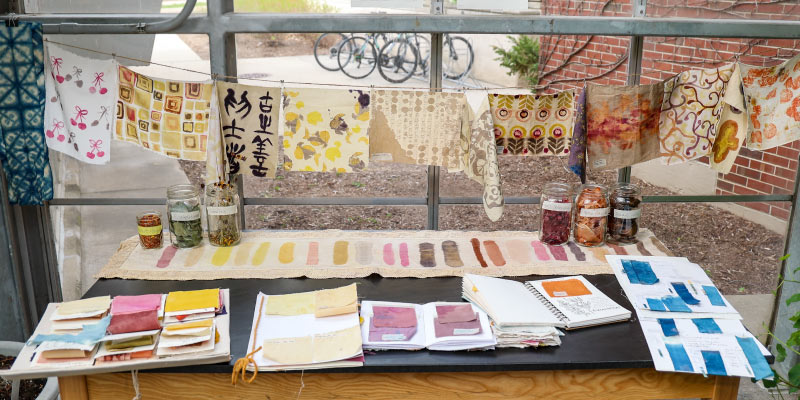
During last year’s Earth Fest celebration, UW–Madison’s D.C. Smith Greenhouse was adorned with beautiful hangings dyed in all colors of the rainbow. In a wing of the greenhouse, a group of students and community members gathered around a vat of indigo dye, taking turns dying cloth strips, socks, and even denim shorts!
This year, Eco-Fashion: Plant-Based Dyes will be returning to the D.C. Smith Greenhouse on Thursday, April 24, for Earth Fest 2025. Led by lecturer Sara Holwerda from the School of Human Ecology’s Department of Design Studies, this event showcases student work from Textile Design: Print and Dye and invites the UW–Madison community to explore natural dye in action.
“I think it’s really cool to pick up something — like a leaf or a walnut — and realize you can turn that into a color.”
— Sara Holwerda
Holwerda was first introduced to natural dyes over the COVID-19 pandemic when she moved from Chicago to Madison. “It was the first time in my adult life that I had a yard, and through gardening I was able to explore these dyes,” she says. She started incorporating natural dyes into her teaching three years ago, when she started teaching a course called Cloth to Clothing at UW–Madison. Since then, she began teaching the Print and Dye class, which she has taught for the past two years.
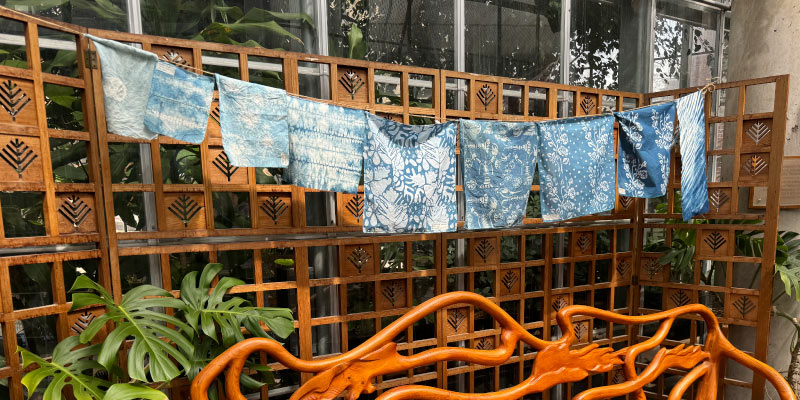
In this class, Holwerda covers the basics of textile dye, with an emphasis on natural dyes.“We touch on some synthetic dyes that are safe to use in a studio environment, but I really want to teach students about what we can do with natural dyes, their historical connections, and how they can be a more sustainable solution going forward,” Holwerda says.
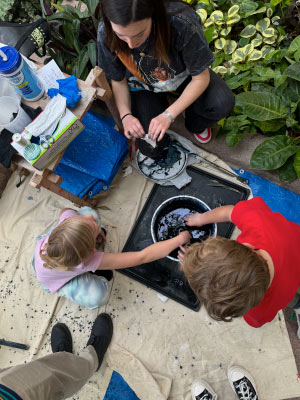
In addition to teaching students how to use natural materials — including roots, leaves, woodchips, fruit peels, and insects — to create these dyes, Holwerda also covers the environmental and workplace hazards of using synthetic dyes. “Synthetic dyes are very toxic, they use up a lot of water, and are heavily tied to fast fashion,” she says. “Some of the natural dyes we use take a lot of work to make the color stick; it’s a multi-step process. In a way, it’s an antidote to fast fashion.”
Holwerda says using natural dyes can also build on people’s relationship to the land around them. “Some of the colors we use come from plants that grow on campus. I think it’s really cool to pick up something — like a leaf or a walnut — and realize you can turn that into a color,” she says. Last year Holwerda led a “foraged color” day in the class, where she invited students to create dyes from their surroundings, such as food waste. Some of her students created dyes from dried onion skins they collected from dining halls on campus. Another student, who worked at Bandit Tacos, created pink dye from the restaurant’s leftover avocado pits.
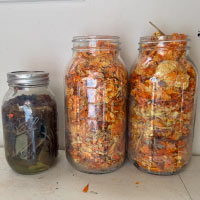
Learning about natural dyes has also helped some students become more in-touch with their cultures. For Edward Xiong, a textile and fashion design student, this class has been an opportunity to learn more about traditional Hmong dyeing techniques. “I chose to study textile and fashion design because I wanted to explore Hmong textiles,” Xiong says. “Historically, Hmong have communicated their identities and culture through clothing using natural dyes and textile embellishments.” Now, Xiong is exploring these dyes and textiles to express himself through art that honors Hmong traditions.
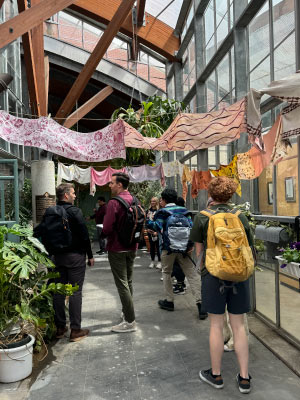
Xiong’s favorite dye is indigo, which is integral to Hmong culture. “Every time I work with indigo, I learn something new,” he says. “For example, I learned from one of my cousins that every Hmong family has a pot of indigo outside their house, which they use as medicine.” At this year’s plant dye event, the class is planning on having a live demonstration of how the indigo dye takes effect, a popular activity from last year’s Earth Fest. In the vat, the dye appears to be a yellowish-green color — but after a cloth is dipped in and removed from the dye, it oxidizes into a deep blue color. “It’s a pretty immediate reaction,” says Holwerda, who has helped coordinate the event both this year and last year.
Also at the event, Print and Dye students will have the opportunity to showcase their naturally-dyed textile work throughout the semester — including swatchbooks, eco printing, resist dyeing, and more. Holwerda is also planning on displaying some samples of fresh and dried plant material that the students have used in their dyes.
Due to their artistic, cultural, and environmental significance, natural dyes are essential to promoting more eco-conscious fashion and textile design. As Holwerda and her students have demonstrated, these beautiful dyes can help people become more connected to their surroundings, explore their culture, and reduce unnecessary pollution from toxins in synthetic dyes. Whether you’re interested in learning more about the sustainable capabilities of natural dyes, exploring student work, or creating a work of art to add to your wardrobe, Eco-Fashion: Plant-Based Dyes has something for everyone!
 DIY Dyes at Earth Fest
DIY Dyes at Earth Fest
Eco-Fashion: Plant-Based Dyes
Thursday, April 24 | 11 a.m.–1 p.m.
Learn more